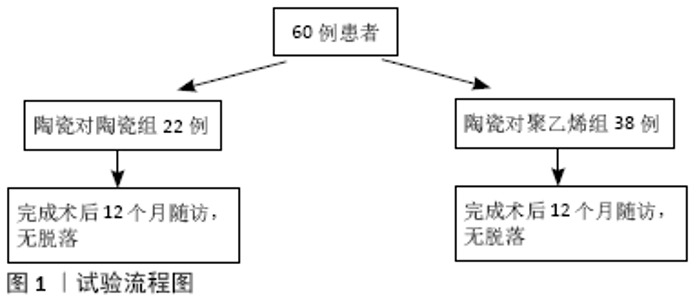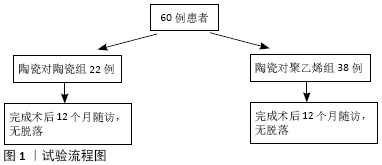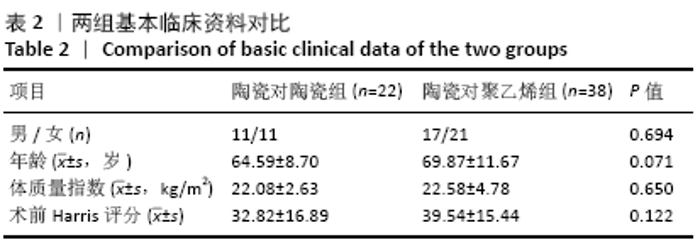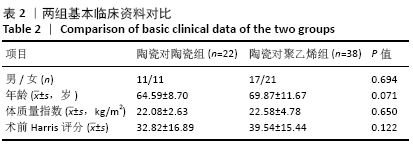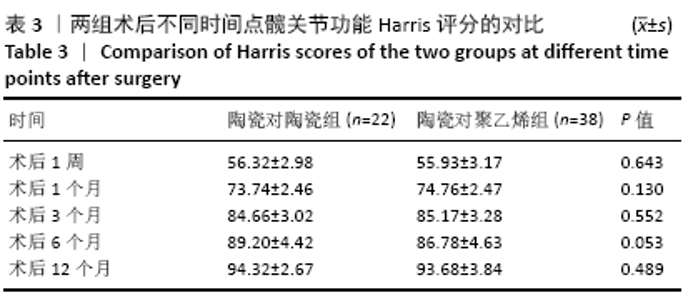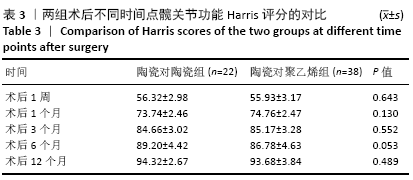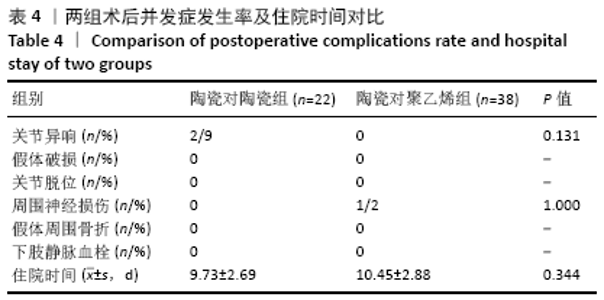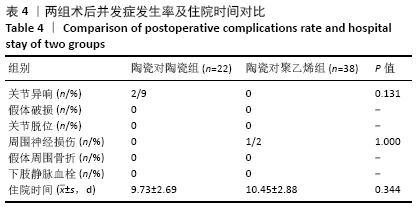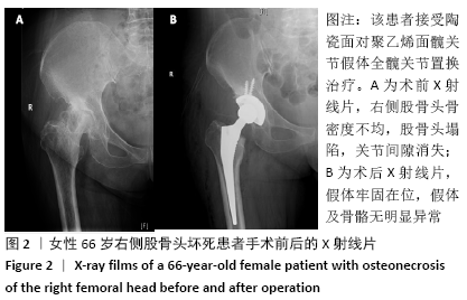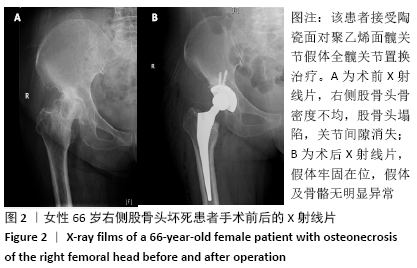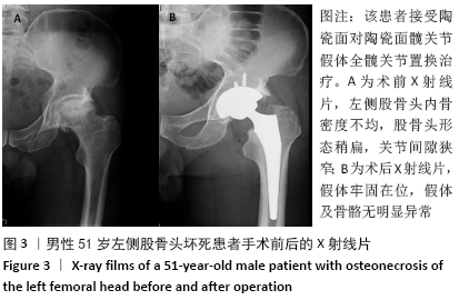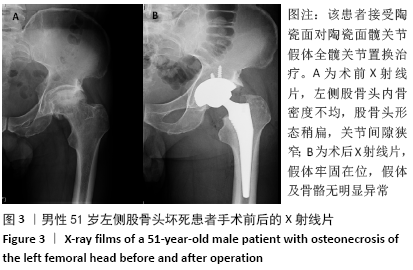[1] 王俏杰,张先龙.人工髋关节置换术的现状与热点[J].中华关节外科杂志(电子版),2015,9(6):718-724.
[2] MORETTI VM, POST ZD. Surgical Approaches for Total Hip Arthroplasty. Indian J Orthop. 2017;51(4):368-376.
[3] SHAPEY IM, JABBAR S, KHAN Z, et al. Scan-directed mini-incision focused parathyroidectomy: how accurate is accurate enough? Ann R Coll Surg Engl. 2017;99(2):123-128.
[4] GHOSH S, CHOUDHURY D, ROY T, et al. Tribological performance of the biological components of synovial fluid in artificial joint implants. Sci Technol Adv Mater. 2015;16(4):45002.
[5] VARNUM C. Outcomes of different bearings in total hip arthroplasty - implant survival, revision causes, and patient-reported outcome[J]. Dan Med J. 2017;64(3):B5350.
[6] CUCCHI D, GATHEN M, STREICHER R, et al. Ceramic-on-Ceramic in Total Hip Replacement Revision. Z Orthop Unfall. 2018;156(3):272-280.
[7] SENTURK U, PERKA C. Ceramic-on-ceramic bearings in total hip arthroplasty (THA). Z Orthop Unfall. 2015;153(2):198-202.
[8] HU CY, YOON TR. Recent updates for biomaterials used in total hip arthroplasty. Biomater Res. 2018;22:33.
[9] CUBILLOS PO, DOS SV, PIZZOLATTI A, et al. Evaluation of Surface Finish and Dimensional Control of Tribological Metal-Ultra High Molecular Weight Polyethylene Pair of Commercially Available Hip Implants. J Arthroplasty. 2018;33(3):939-944.
[10] MIHALKO WM, WIMMER MA, PACIONE CA, et al. How have alternative bearings and modularity affected revision rates in total hip arthroplasty? Clin Orthop Relat Res. 2014;472(12):3747-3758.
[11] BERRY DJ, ABDEL MP, CALLAGHAN JJ. What are the current clinical issues in wear and tribocorrosion? Clin Orthop Relat Res. 2014;472(12): 3659-3664.
[12] JACOBS JJ, SUMNER DR, GALANTE JO. Mechanisms of bone loss associated with total hip replacement. Orthop Clin North Am. 1993; 24(4):583-590.
[13] CHAN FW, BOBYN JD, MEDLEY JB, et al. Engineering issues and wear performance of metal on metal hip implants. Clin Orthop Relat Res. 1996;(333):96-107.
[14] SEDEL L. Evolution of alumina-on-alumina implants: a review. Clin Orthop Relat Res. 2000;(379):48-54.
[15] BENIGNUS C, MORLOCK M, BECKMANN J. Total hip arthroplasty in young patients : Bearings and custom-made prostheses. Orthopade. 2019;48(4):292-299.
[16] KIM SC, LIM YW, JO WL, et al. Fourth-generation ceramic-on-ceramic THA results in improvements in midterm outcomes compared to third-generation THA but does not resolve noise problems: a cohort study of a single-hip system. BMC Musculoskelet Disord. 2019;20(1):263.
[17] ZHAO CC, QU GX, YAN SG, et al. Squeaking in fourth-generation ceramic-on-ceramic total hip replacement and the relationship with prosthesis brands: meta-analysis and systematic review. J Orthop Surg Res. 2018;13(1):133.
[18] TOZUN IR, OZDEN VE, DIKMEN G, et al. Mid-term result of ceramic bearings in total hip arthroplasty. Int Orthop. 2014;38(10):2027-2031.
[19] WU GL, ZHU W, ZHAO Y, et al. Hip Squeaking after Ceramic-on-ceramic Total Hip Arthroplasty. Chin Med J (Engl). 2016;129(15):1861-1866.
[20] VARNUM C, PEDERSEN AB, KJAERSGAARD-ANDERSEN P, et al. Do different types of bearings and noise from total hip arthroplasty influence hip-related pain, function, and quality of life postoperatively? Acta Orthop. 2016;87(6):567-574.
[21] MATHARU GS, DANIEL J, ZIAEE H, et al. Failure of a novel ceramic-on-ceramic hip resurfacing prosthesis. J Arthroplasty. 2015;30(3):416-418.
[22] CHO MR, CHOI WK, KIM JJ. Current Concepts of Using Large Femoral Heads in Total Hip Arthroplasty. Hip Pelvis. 2016;28(3):134-141.
[23] 侯喜君,李霖,王春华,等.陶瓷对陶瓷全髋关节置换治疗中青年股骨颈骨折的分析[J].中国组织工程研究,2013,17(52):8955-8960. |
